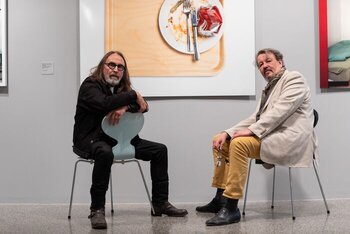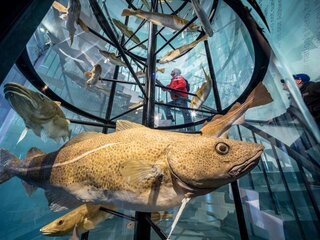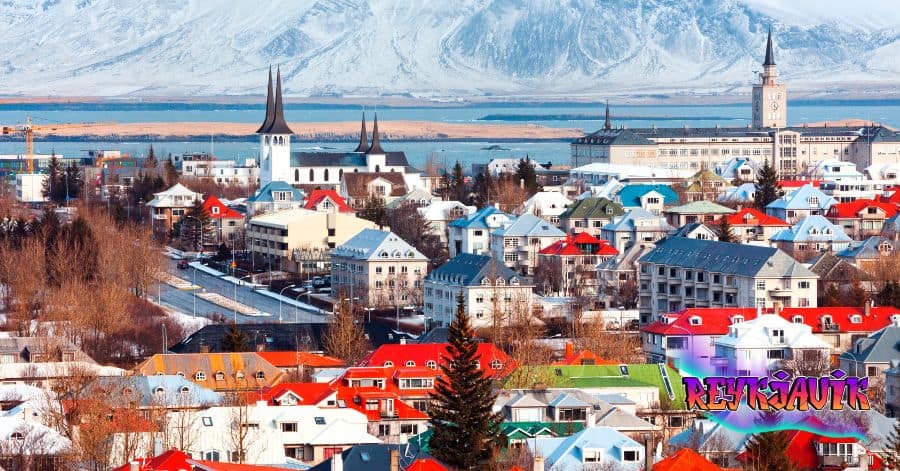Iceland’s capital is a vibrant, culturally dynamic city. A perfect gateway to natural marvels that many dream of witnessing their whole lives. There are so many things to do in Reykjavik that will take your heart away.
Reykjavik, Iceland’s capital city, will take your breath away. It has charming and vibrantly colored coastal houses, one-of-a-kind shops, and constant reminders of the country’s Viking past. Reykjavik is a peaceful, quirky, historical, and artistic city with a population of just 215,000. The region of fire and ice is inherently breathtaking, and the scenery is unforgettable. As you walk through the beautiful downtown streets, take a sightseeing tour, or relax in one of the city’s 17 hot pools.
Here, former fish packing plants have been transformed into modern tourist attractions, with artistic murals adorning the walls and cutting-edge Nordic eateries opening. The waterfront was selected for Harpa, a cultural facility designed by lafur Elasson as a memorial to 21 century Reykjavik. As is the case with every great location, Reykjavik is continuously reinventing itself as shown by the Grandi Area next to the Old Harbour.
Although there’s plenty to do inside the city boundaries, its position makes day excursions to many must-see attractions like as the Blue Lagoon as well as natural waterfalls in the region simple.
TOP 15 BEST THINGS TO DO IN REYKJAVIK
Our list of the best attractions and things to do in Reykjavik will help you plan your visit.
Without waste of time let’s have a look at the top best things to do in Reykjavik:
Hallgrimskirkja Church
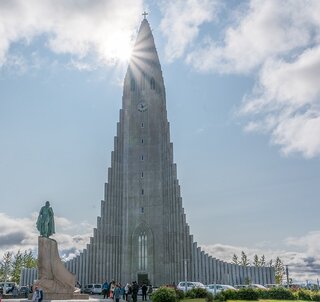
As both a local parish as well as Iceland’s national sanctuary, Hallgrmskirkja dominates the skyline of Reykjavik.
Gujon Samelsson designed the chapel in the early 1940s; it took 41 years to complete and was eventually dedicated in 1986. Cascading pillars flank the 74.5-meter tower, evoking Iceland’s basalt scenery as well as creating the illusion of a rocket lifting flight.
A statue of Leif Eriksson, the Norse explorer attributed with being the first European to stepped foot on American land at the beginning of the 11th century, is just in front.
A highlight of the inside is a gigantic 15-meter-tall, 25-ton organ by German maestro Johannes Klais. Additionally, for ISK 1000, you may climb the tower for pleasing views of the capital.
National Museum of Iceland
The Natural History Museum of Iceland seems to have a collection that dates all the way back to 1863. It was relocated to its present, fairly unassuming location in 1950. This offers little indication of the wonders that await on the interior’s two levels.
The most prized artifact in the early 13th-century Valjofsstaur door. The relief in the pine forest is reminiscent of the medieval Arthurian tale Yvain, the Knight of the Lion.
This is just one of the many interesting artifacts in the continuous Making of a Nation exhibition. It includes over 2,000 items including 1,000 photos spanning the centuries from a longboat to a contemporary airport.
Harpa
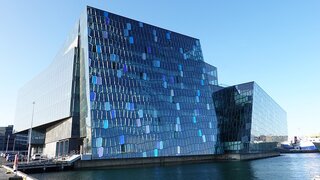
Harpa is the music venue as well as convention center on the sea at Reykjavik’s Old Harbour. The project began in 2007 and was finished in 2011, after a delay due to the financial crisis.
Harpa was crafted by the Danish company Henning Larsen Architects. Olafur Eliasson created the surreal exterior inspired by Iceland’s renowned basalt.
Harpa is home to the Icelandic Symphony Orchestra and Icelandic Opera. A jam-packed festival schedule, including the ultra-hip Sonar Reykjavik in March.
On a normal day, visitors may visit the café, restaurant, and store. Also take in a free exhibition and indeed the 15-minute 360° film on Iceland’s natural marvels at the Iceland Expo Pavilion.
Reykjavik Maritime Museum
This fish freezing plant in Reykjavik’s Old Harbour was built in 1947. It was transformed into the city’s Maritime Museum in 2005. The former fish-processing hall now houses an excellent museum about the history of sailing in Iceland. It was complete with a specially built wooden pier under which saltwater flows.
You’ll enter the dock through the rebuilt deck of the MV Gullfoss. It is a mid-20th-century ferry that operated across Iceland, Denmark, as well as Scotland.
The display “From Poverty to Abundance” shows how technical advancements transformed Iceland’s fishing sector in the twentieth century.
Onboard is a trawl warp cutter, which is used to dismantle the nets of UK trawlers that enter Icelandic seas.
Grotta Lighthouse
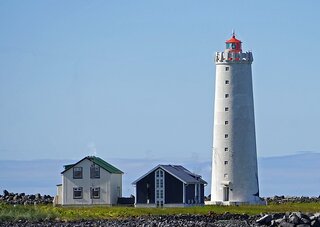
The Grotta Lighthouse is a popular leisure area and bird refuge. Not to mention, an excellent location for seeing the northern lights. Additionally, it provides views of portions of the city and the whole bay. To reach the lighthouse, cross a short, sandy bank, but be cautious of the rising tide. If you arrive by vehicle, you may park in the little parking area and wait for the aurora borealis. The show may last for hours on clear nights, but you must be patient while waiting for it to begin. Restrooms and a bar are available for tourists.
Visit Reykjavik’s Swimming Pools
Iceland is a country characterized by water in many ways. It has massive glaciers from the rolling waves of the Atlantic Ocean to the hot geothermal pots. What better way to immerse yourself in Icelandic culture than by imitating the locals as well as visiting one amongst Reykjavik’s neighborhood pools?
Due to Iceland’s renewable energy regulations, large-scale water usage is very affordable, making it a popular activity among many Icelanders. This enthusiasm has resulted in the construction of 18 swimming pools in the broader Reykjavik region alone.
Several of these sites include both indoor and outdoor pools, a sauna, and at least one hot tub. Fortunately, the pools feature heated water, making them year-round accessible. Consider Icelandic swimming pools to be more akin to a luxury spa rather than your neighborhood community pool.
The Sun Voyager Sculpture
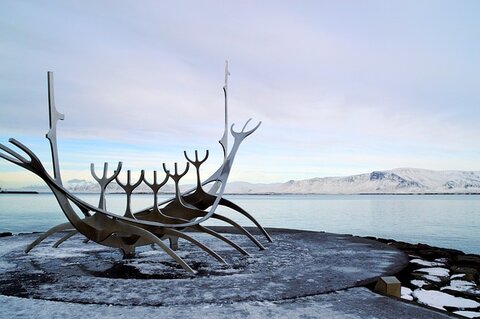
One of my favorite free activities in Reykjavik is to go down the shore to this magnificent metal sculpture resembling a Viking battleship. The internationally renowned ‘Solfar’ or Sun Voyager sculpture.
Icelandic sculptor Jon Gunnar Arnason created this amazing work. The art is an “ode to the sun,” representing light and optimism. Around sunset is one of the finest times to see it. It is at the east of Harpa Concert Hall and may be reached on foot.
Crazy Icelandic Nightlife
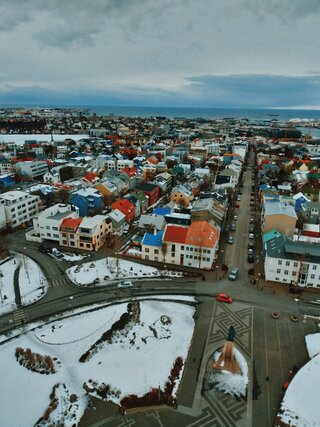
Reykjavik has incredible nightlife for such a tiny city. On weekends, the downtown area’s nightclubs and bars stay open late (until 5:00 a.m.). Everything is centrally located, making it simple to bar hop from one spot to the next on foot. Kaffibarinn, Kaldi, and the finer B5 are three of my favorite bars in Reykjavik.
Iceland really is one of the friendliest nations on the planet. You can relax as well as have a party without having to worry as much as you would while visiting other countries. Additionally, Reykjavik hosts a slew of interesting music events, including the yearly Iceland Airwaves in November.
Golden Circle
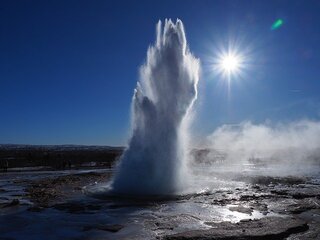
Three of Iceland’s most breathtaking natural wonders are here. It is a 300-kilometer circle from Reykjavik through the country’s southern uplands.
The first destination, located a little over an hour center of the city, is the UNESCO-listed Thingvellir National Park. It has a canyon formed by the rift between the Eurasian and North American tectonic plates. Moreover, you can see the Gullfoss, a spectacular 32-meter-high double waterfall. You can see Haukadalur valley home to many springs, muddy pots, geysers, including Strokkur, which explodes every 5-10 minutes.
Tours leave from Reykjavk between 8:00-10:00 a.m. and 12:00-14:00 p.m. and return in the evening. To increase your independence, you may hire a vehicle.
In summer, those who don’t like crowds may even depart at night. See these beauties illuminated by the midnight sun before camping in Thingvellir National Park.
Whale Watching and Puffin Tours
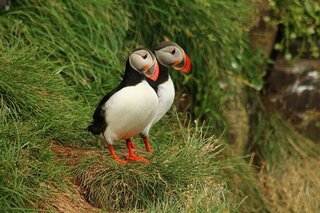
Reykjavik is one of the finest locations in Iceland to view whales. Its location inside Faxa Bay is a summer meeting area for a variety of species.
Between April and September, the bay is home to around 20 species of cetaceans. Although the minke and humpback whales are by far the most numerous. Daily tours leave from the Old Harbour, the majority in small boats with a personal touch.
While the chances of seeing a humpback or minke whale breaching are great, there is more to look for. Most excursions pass through Akurey, which is home to a large puffin colony. From the bay, the views back to Reykjavik and its mountainous background are unforgettable. Seals, fair skinned dolphins, and harbour porpoises may appear on occasion.
Try the Local Cuisine in Reykjavik

Reykjavik is home to some really exceptional locally and internationally food.
Restaurants that thus specialize in local seafood or grilled meats may be found. Apart from Icelandic restaurants, the city also has outstanding Thai, Italian, Indian, Mexican, Japanese, and even Ethiopian eateries.
To sample the finest of Icelandic cuisine, visitors may explore Reykjavik’s culinary scene. Sample some of the country’s most delectable specialties here. The local cuisine has lots of shellfish and lamb. Ordering the fish of the day at one of Reykjavik’s fast food places is always a good choice.
The cod’s head cooked in chicken broth is a favorite meal at Matur og Drykkur. You will not be disappointed if you give it a try.
Blue Lagoon
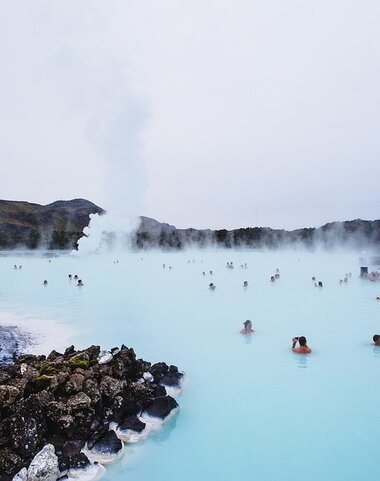
Blue Lagoon, located about 30 miles southwest of Reykjavik, is one of Iceland’s most famous tourist attractions. With an azure-colored water column billowing from its surface, this geothermal mineral spa has an almost unearthly appearance.
Recent guests have hailed their experience as wonderful and well worth the hefty price tag. To cut down on travel time to and from the lagoon, tourists recommend visiting after arriving at or just before leaving from Keflavik International Airport. It is just 13 miles away.
Day Trip to Mount Esja
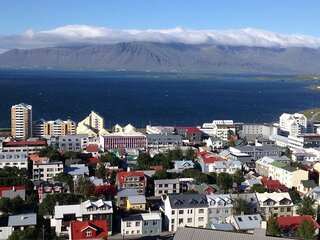
Mount Esja’s magnificent appearance in the distance of Reykjavik makes for one of the finest day excursions during your stay. Enjoy Iceland’s clean air by climbing one of the mountain’s major routes. Each route up the mountain has markers indicating its difficulty level.
Mount Esja is an excellent day trip destination for both casual hikers and hardcore day-trippers. You may climb to the summit, which is 914 meters above sea level. Sign the guestbook, or you can turn back at the more popular halting spot just below the peak at a rock named Steinn. Take aware that the route further than the Steinn is very challenging. It should only be done by experienced climbers and hikers.
Perlan Museum
The Perlan Museum of Icelandic Natural Marvels is a magnificent structure with brand-new, state-of-the-art displays. It focuses on the country’s various natural wonders, including cliffs and volcanoes to the island’s marine life.
Among the most stunning displays is a model of an ice cave that visitors may explore in temperatures as low as 14 degrees Fahrenheit. The glacier exhibition delves into Iceland’s glacial past as well as the future among these natural marvels.
The Perlan planetarium is an immersive and engaging experience that allows visitors to experience the Northern Lights even if they do not see them during their visit to the countryside. When visiting Perlan, make your way to the viewing deck for a panoramic view of Reykjavik at 360 degrees.
Bruarfoss Waterfall
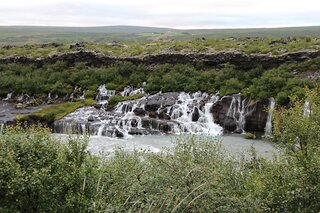
You do not want to go far to see one of Iceland’s most beautiful waterfalls. The Bruarfoss waterfall in Reykjavik displays naturally blue water in an unreal hue. The whole waterfall is made up of cascades created by converging fountains.
It’s unsurprising that the Bruarfoss waterfall is a popular photographic subject. If you want to come, allow enough time to get there since, depending on the weather, the paths may be slick and navigation can be challenging. You should be OK if you bring a pair of solid shoes. The beauty of the cascade more than compensates for the additional space that the shoes will take up in your luggage.
